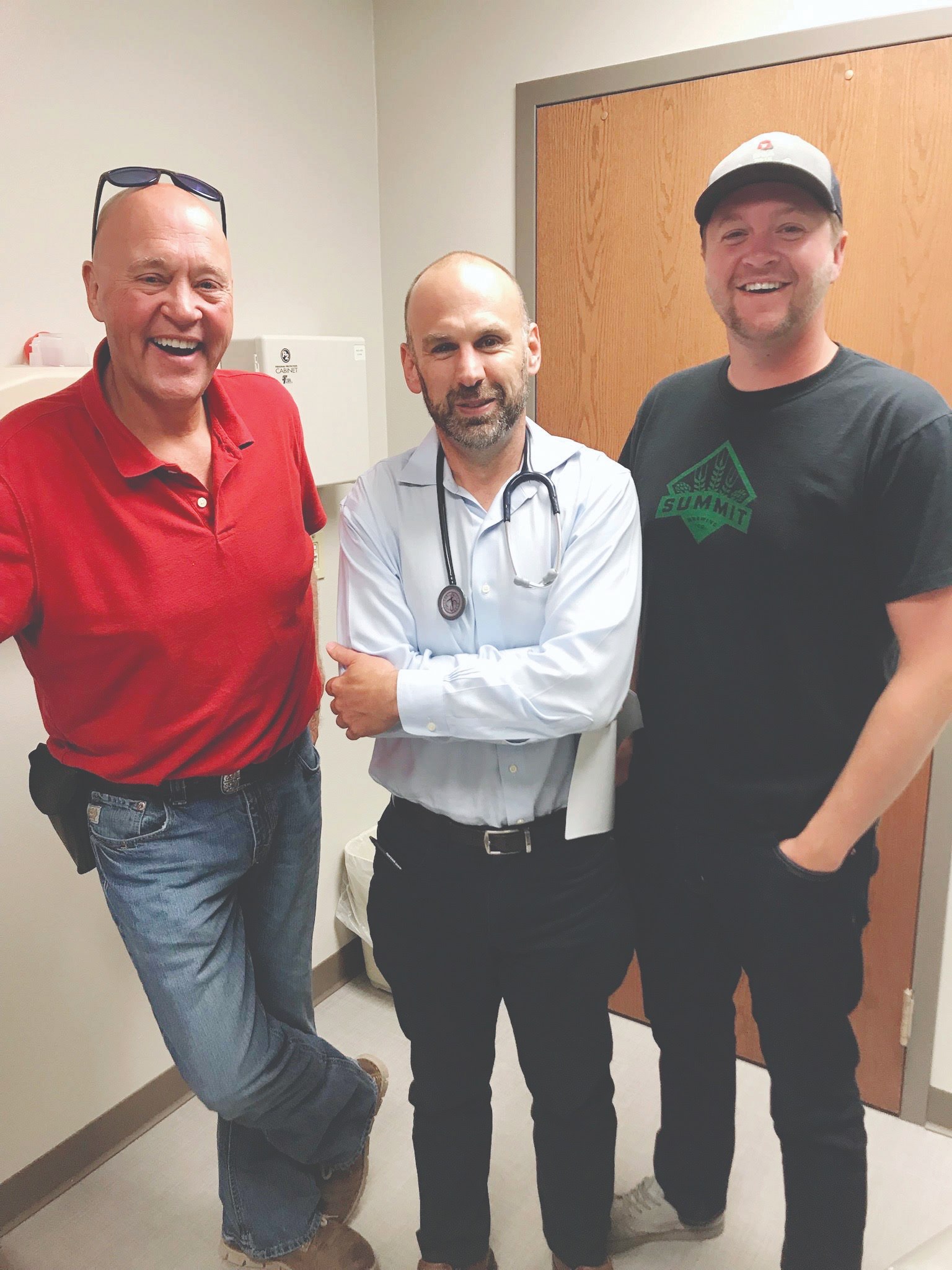Kip Wagner was 34 years old when he found out he had type 1 diabetes. His daughter, Katie Washnok, was diagnosed at age 12. Kip’s son, Kevin Wagner, was 25.
The Wagners are proof that genetics play a big role in type 1 diabetes. They also prove that the disease is not just a young person’s affliction.
“That's one of the misunderstandings about diabetes. We used to call type 2 diabetes adult onset and type 1 juvenile diabetes … but you can have young kids with type 2 diabetes and people in their 20s, 30s, 40s even 50s who get type 1 diabetes,” said Monument Health Endocrinologist John Palmer, D.O.
Kip, now 63, lives in Whitewood. He was referred to Dr. Palmer in 2011. “It took about 30 seconds to figure out I was in the right place,” Kip said. Now Katie, 34, and Kevin, 29, are also treated by Dr. Palmer.
“It’s a family affair for us with Dr. Palmer. My dad, who’s been type 1 for almost 30 years now, is the best testimonial out there for Dr. Palmer,” said Kevin, of Spearfish. When Dr. Palmer was practicing in Sioux Falls, the family would go to Sioux Falls for treatment. And Katie, who now lives in Aberdeen, travels across the state for her appointments with him.
During a recent interview at Rapid City Clinic, Flormann Street, where Dr. Palmer practices, Kip, Kevin and their doctor chatted about glucose levels, insulin units and basal rates with the ease and comfort of old friends.
Different diseases
Both types of diabetes involve problems with insulin, a hormone produced by the pancreas to regulate blood glucose — also called blood sugar — in the body’s bloodstream. It helps turn the food you eat into energy and store energy away when it’s not needed.
Not enough glucose in the bloodstream means you feel tired and weak. The body could eventually begin burning fat and muscle to keep going. Too much glucose can damage nerves, blood vessels, tissues and organs.
Type 1 diabetes, Dr. Palmer explained, is an autoimmune disease. The body attacks the insulin-producing cells in the pancreas, causing them to stop production. For Kip and Kevin, insulin production tapered off for about two years before stopping. For 12-year-old Katie, her pancreas shut down completely and quickly.
With type 2 diabetes, the body either doesn’t produce enough insulin, doesn’t metabolize it, or both. Although there is a strong genetic factor in type 2 diabetes, poor diet and lack of exercise are its main drivers.
There is little that type 1 patients can do to avoid the disease. Dr. Palmer said Monument Health has been involved in clinical trials of treatments to preserve the insulin-producing cells before the autoimmune system can do its damage.
Advances in treatment
What separates Kip’s early diabetes experience from that of his children are the advances in technology that make it much easier to manage. In 1995, when Kip was diagnosed, living with the disease required regular pin pricks, syringes and a carefully controlled diet.
Now, Dr. Palmer’s type 1 patients regulate their glucose levels via sensors and insulin pumps attached to catheters embedded in the skin. Both devices communicate constantly with a cell phone app that shows glucose levels and allows patients to manually adjust their levels if needed. In addition, the quality of the insulin manufactured today is better, Dr. Palmer said.
“You used to have to really direct your lifestyle around the diabetes. You had to eat at a certain time, take your injections at a certain time and if you didn’t, there was trouble.” Dr. Palmer said. “Now your lifestyle becomes the focus.”
Still diabetes is a daunting diagnosis. That was especially true for Katie when she was diagnosed at just 12 years old. “It was tough, but I was lucky because I had parents who never let me have a pity party,” she recalled. “They said, ‘Yep, you’ve got this and you are going to be in charge of it. It’s not going to be in charge of you. You’re the boss.’ I was like ‘I love being the boss, so let’s do it.’”
When Kevin was diagnosed in August 2019, sensors, pumps and cell phone apps made the disease easier to manage.
“I got lucky I never had to deal with any of that,” he said, referring to the pin pricks and injections that used to control a diabetic’s life. However, he said, diabetes still requires a constant awareness of your health. “I read somewhere that the average diabetic makes 180 more decisions a day about their health than the average person,” Kevin said.
“You still have to be captain of your ship,” Dr. Palmer added.
Written by Dan Daly




